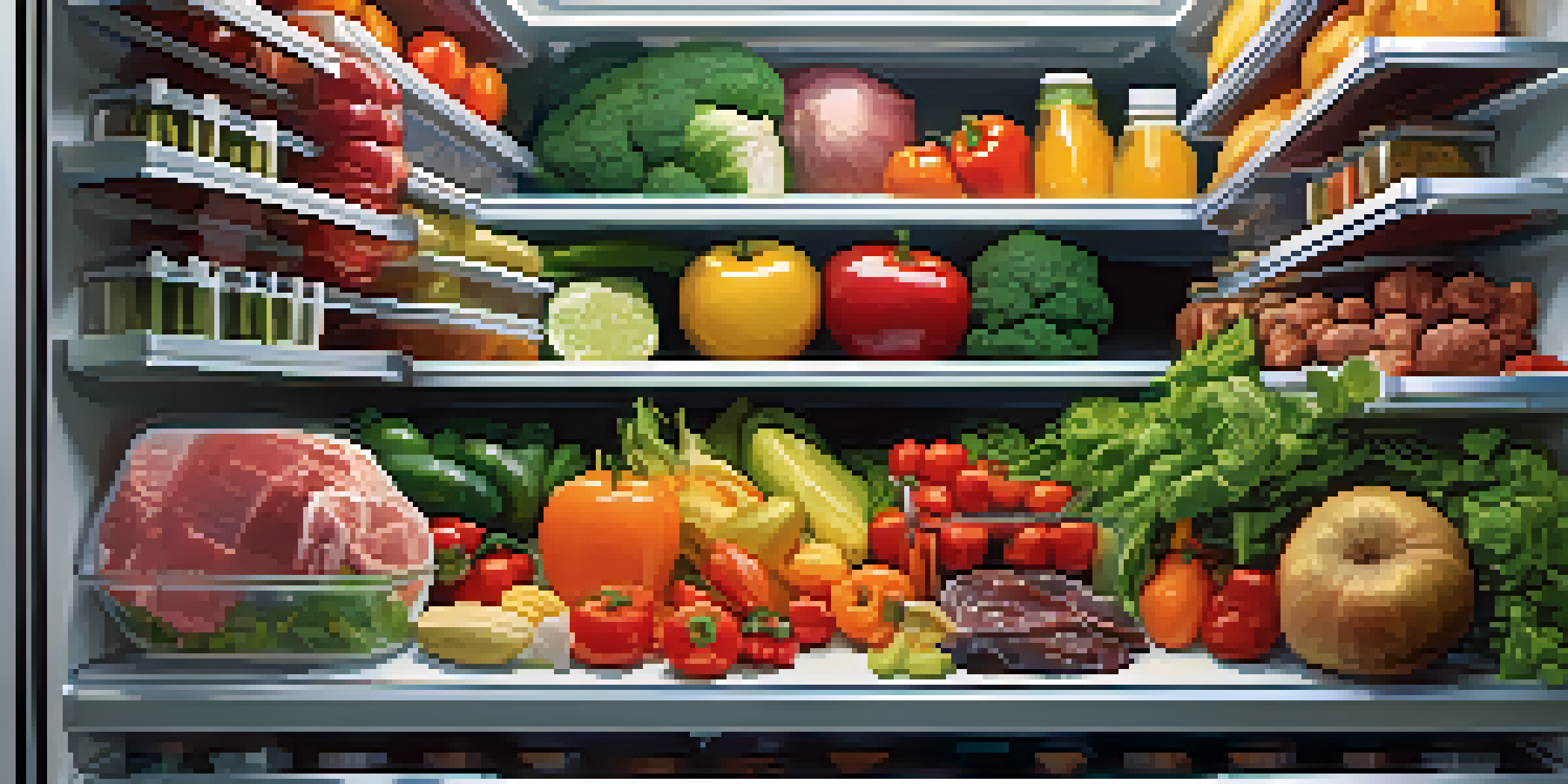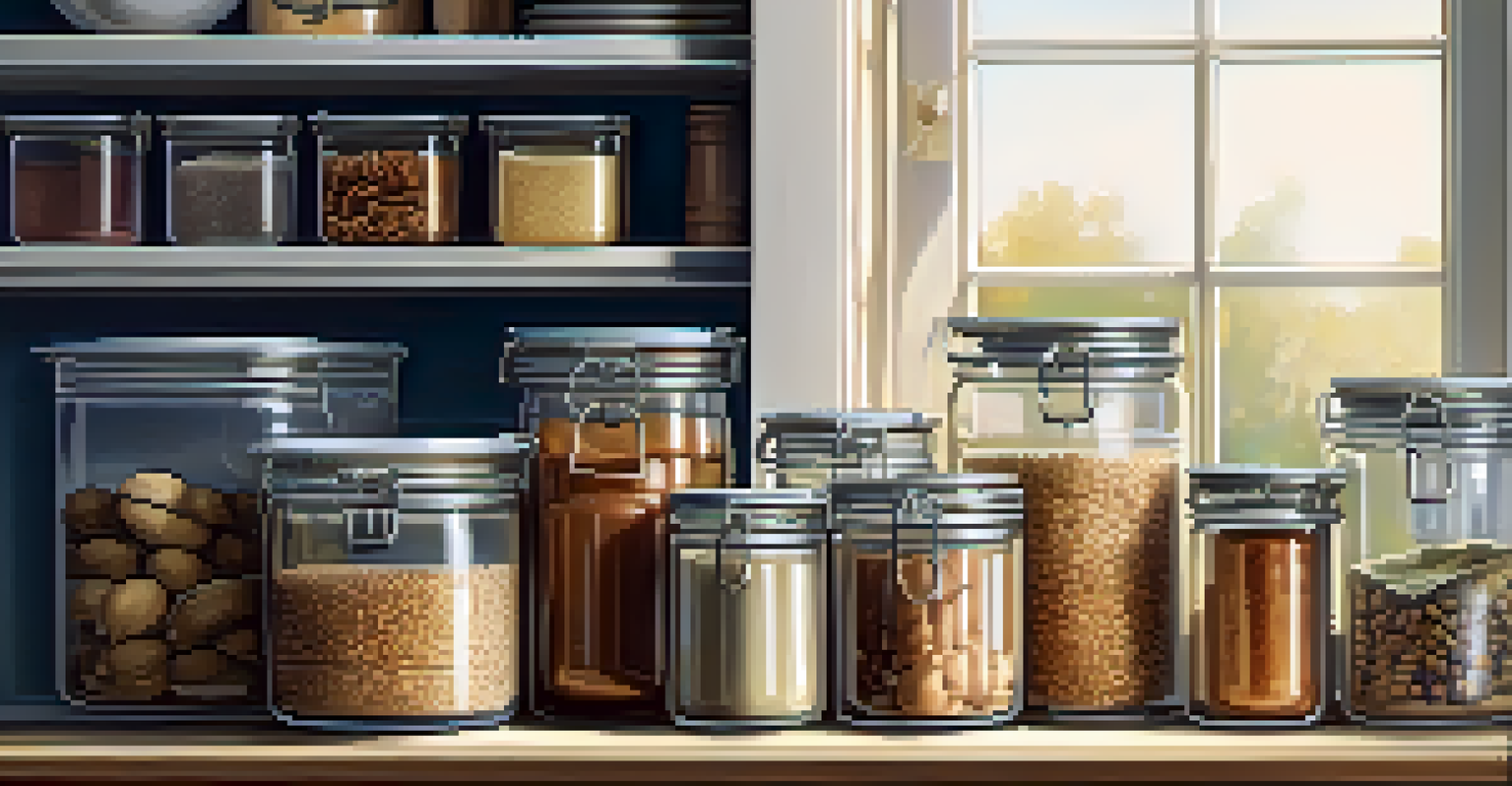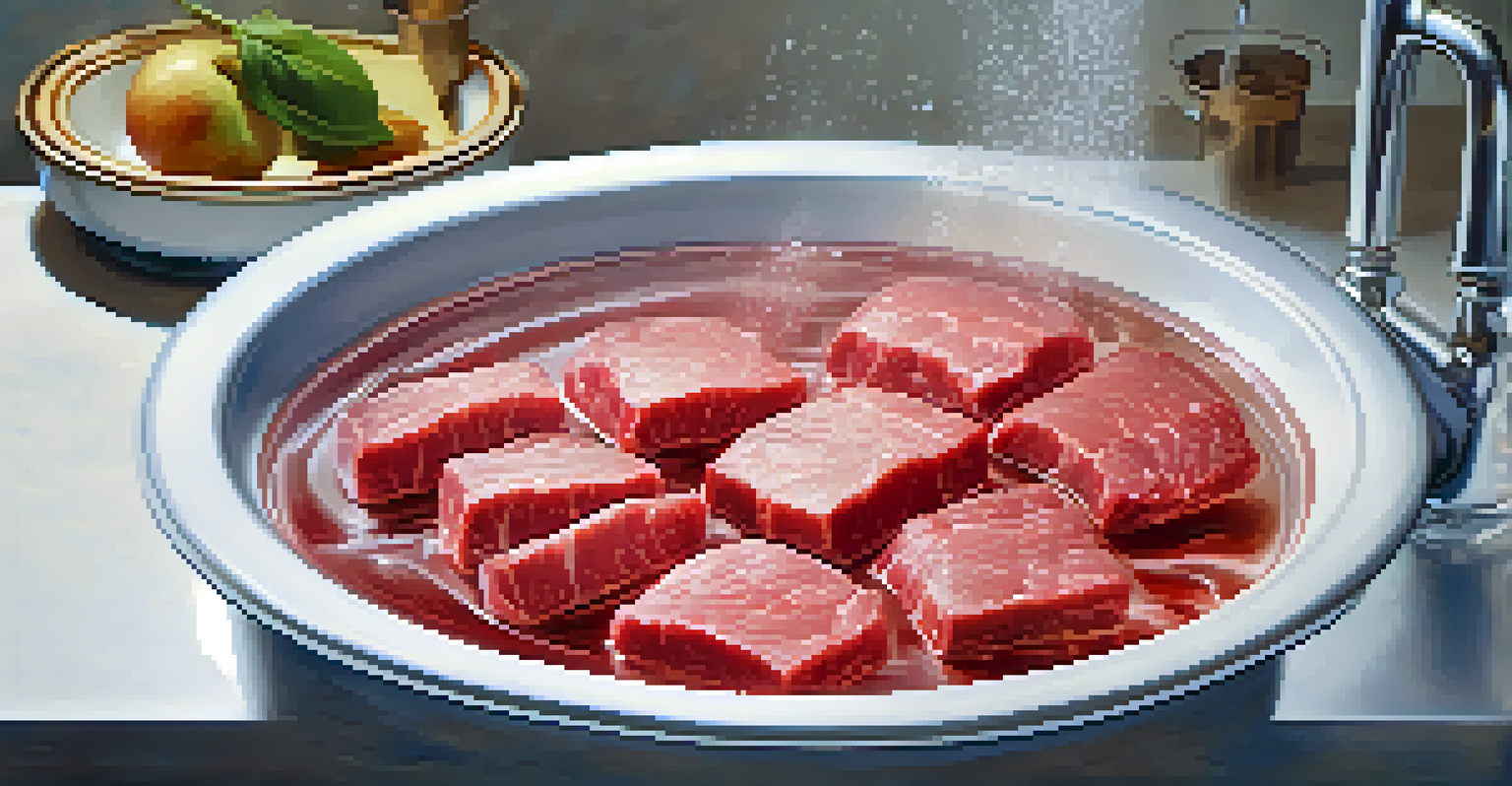The Importance of Proper Storage for Raw Foods

Understanding the Risks of Improper Raw Food Storage
Improper storage of raw foods can lead to a host of health risks, including foodborne illnesses. Bacteria like Salmonella and E. coli thrive in environments where food is not stored correctly. For instance, leaving raw chicken out at room temperature can double its bacteria level in just a couple of hours.
Food safety is a shared responsibility. Everyone has a role to play in keeping food safe.
Food safety isn’t just a minor concern; it’s a crucial aspect of our daily lives. When we don’t prioritize proper storage, we expose ourselves and our loved ones to potential harm. Think of it like leaving your front door unlocked; it creates an opportunity for trouble.
Understanding these risks emphasizes the need for vigilance in food storage practices. It’s not merely about convenience; it’s about safeguarding our health and well-being.
The Role of Temperature in Food Storage
Temperature control is one of the most critical factors in storing raw foods. Keeping foods at the right temperature helps slow down bacterial growth, reducing the risk of contamination. For instance, raw meats should be stored at 40°F or below to maintain freshness and safety.

Conversely, letting foods sit in the 'danger zone'—between 40°F and 140°F—can lead to rapid bacterial proliferation. This range is where most harmful bacteria thrive, making it essential to keep an eye on your fridge settings.
Safe Storage Prevents Illness
Improper raw food storage can lead to harmful bacteria growth, increasing the risk of foodborne illnesses.
By understanding the importance of temperature, we can make informed decisions about food storage. It’s like maintaining a car; regular checks help ensure it runs smoothly and safely.
Choosing the Right Containers for Raw Foods
Using appropriate containers for raw foods is vital for maintaining freshness and safety. Airtight containers help prevent contamination and keep your foods from drying out. For example, using glass containers for marinating meats can help avoid chemical leaching from plastics.
The first rule of food safety is to prevent contamination from occurring in the first place.
Additionally, labeling containers with dates can help you keep track of freshness. This simple act can save you from consuming spoiled food and reduce waste in your kitchen.
Ultimately, investing in quality storage solutions pays off by prolonging the life of your foods. Think of it as wrapping a gift; the better the wrap, the more likely it is to stay intact.
The Importance of Cleanliness in Food Storage Areas
A clean environment is crucial for safe food storage. Regularly cleaning your refrigerator and pantry helps eliminate potential sources of contamination. For instance, spilled liquids or expired items can harbor bacteria that may infect your fresh foods.
It’s a bit like tending a garden; if you don’t remove weeds and debris, they can overtake the healthy plants. By maintaining cleanliness, you create a safe haven for your raw foods.
Temperature Affects Food Safety
Maintaining the right temperature is crucial as storing foods incorrectly can allow bacteria to thrive.
Incorporating a cleaning routine into your kitchen habits can greatly enhance food safety. After all, a clean kitchen is a happy kitchen!
Understanding Expiration Dates and Food Lifespan
Expiration dates play a vital role in determining the safety and quality of raw foods. These dates indicate how long a food product is guaranteed to maintain its best quality. It’s important to respect these dates, as consuming foods past their expiration can lead to serious health risks.
Additionally, understanding the difference between 'sell by,' 'use by,' and 'best before' dates can help you make informed choices. For example, a 'use by' date signals that the product is no longer safe to consume after that date.
By keeping track of expiration dates, you can reduce waste and ensure that you’re eating safe, nutritious foods. It's like following a roadmap; knowing where you're going helps you avoid detours!
Utilizing Proper Thawing Techniques for Raw Foods
Proper thawing techniques are crucial for maintaining the safety of raw foods. Thawing foods at room temperature can lead to uneven temperatures, which enhances bacterial growth. Instead, consider methods like thawing in the refrigerator or using cold water, both of which keep foods at safer temperatures.
For instance, if you’re in a hurry, placing a sealed bag of meat in cold water can speed up the thawing process without compromising safety. Just remember to change the water every 30 minutes to keep it chilly.
Cleanliness Ensures Food Quality
Regular cleaning of food storage areas helps eliminate contamination sources and keeps raw foods safe.
Understanding the right thawing techniques can make a significant difference in food safety. It’s a bit like following a recipe; doing it step by step ensures a delicious outcome!
The Benefits of Regularly Checking Food Storage Practices
Regularly checking your food storage practices can help you catch potential issues before they escalate. This includes monitoring temperatures, checking expiration dates, and ensuring cleanliness. Just like routine car maintenance, these checks help keep everything running smoothly.
By making it a habit to conduct these assessments, you can ensure that your raw foods remain fresh and safe. It’s similar to having a checklist before a big trip; ensuring everything is in order leads to a more enjoyable experience.

Ultimately, staying proactive about food storage can save you time, money, and health concerns down the line. It’s all about setting yourself up for success in the kitchen!